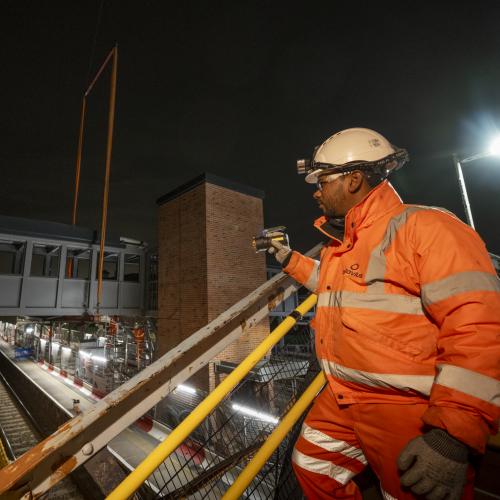Value for money always matters. In the case of Access for All (AfA) programmes, improving value for money means giving more people the freedom to access the rail network within the constraints of a finite budget.
Maximising value for money has a number of interconnected facets. Above all we boost value by managing project complexity more effectively and eliminating avoidable costs. Design to Cost (DtC) is a critical discipline that can control costs and accelerate delivery.
Cost: Designed-In or Designed-Out?
Now consider the influence of design decisions on the cost of delivery. It’s estimated that up to 70% of the cost of a project is influenced by the design. That doesn’t mean all of those costs are avoidable, but it does indicate the most productive area to start the search for efficiencies.
Having delivered over 30 AfA schemes since the launch of the programme, we know that complexity is unavoidable. The very nature of the stations being upgraded ensures that no two projects are identical. There will always be significant technical and logistical problems to resolve once detailed surveys are complete.
When do you start thinking about the cost? Do you take a more or less final design and seek ways to deliver it more cheaply? Or do you combine relevant practical and commercial expertise into the process and produce the design that is the simplest and most economical to deliver?
That’s the essence of DtC. It’s a familiar discipline across many manufacturing sectors – but it hasn’t tended to be the way the construction sector works.
Cost and Time Efficiency
DtC is influenced by material selection, manufacturability and standardisaton. In other words, it means not over-engineering solutions, considering the practicalities of fabrication and onsite installation, and not developing a new solution when there’s something in existence that can be applied or adapted.
Across the industry, and within AfA in particular, we need to get more accustomed to talking about the Minimum Viable Product (MVP). It allows us to deliver schemes not only cheaper, but faster.
MVP isn’t about compromise. That would be unacceptable when you’re talking about something like fire safety. It’s about cost-effective compliance and smarter design decisions – ensuring that critical operational, safety and performance requirements are met as cost-effectively as possible.
This is the future for AfA. It will mean we can deliver schemes consistently faster and more cost-effectively.
DtC forms part of the 10 Steps to More Efficient AfA Delivery document created by Octavius and based on the experience of delivering over 30 projects.
Access our Free AfA Resources to find out more by completing the form below.
Access Our Resource Centre
By signing up, you’ll gain access to our resource hub, designed to support rail operators, designers and project teams in delivering successful Access for All (AfA) projects.
Access valuable resources, including:
- Proven Practices: Practical guides on AfA project management to improve efficiency, reduce costs and achieve sustainable outcomes.
- Regulatory Guidance: Clear insights into compliance requirements to ensure your projects meet the highest standards of accessibility and safety.
- InnovateUK Report Summary: Detailed findings on the future of accessible and inclusive rail travel in the UK.
- House of Commons Report Overview: An overview of the legislative framework for AfA, including its alignment with the Equality Act 2010.
Sign up today to access these essential resources—completely free.

